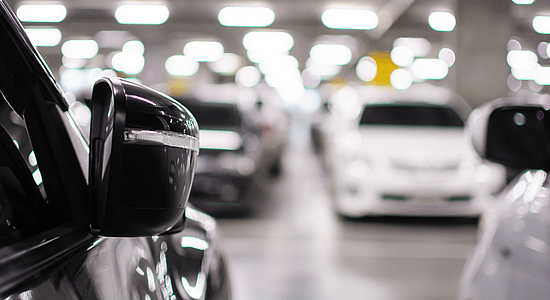Text1
The provision of parking at airports is an essential service for travellers, customers, employees, visitors, and meet-&-greeters. Private cars are the most popular form of transportation to and from airports, providing both convenience and flexibility. However, employee parking can significantly impact the overall parking capacity and retail revenue airports earn.
The number of airport staff and workers who commute daily to an airport represents, on average, from one quarter to up to half of the daily number of passengers, so the impact this has on its parking infrastructure is critical.
When planning for airport parking, the projected number of flights and operations are considered, but few people know the significant role that the number of employees who will be using the parking facilities plays. This can create a shortfall in parking capacity and, of course, reduce the retail parking revenue, which on average, for European airports, is estimated to account for 14% of the airport revenue.
Parking for employees is usually paid by their employer but at a heavily discounted rate from the retail price. Staff parking requirements depend on the size of the airport and the number of passengers. The range of parking spots dedicated to staff normally varies from 25-45% of the total number of employees. Shift work causes many employees to arrive at the same time. Until the previous shift ends, the parking spots can not be freed; therefore, it is necessary to have enough capacity to manage the overlapping shift changes. Generally, the estimated stay for staff parking is 8-12 hours, with aircraft crews being the most notable exception. The total number of staff parking needed changes with the number of employees per shift and also following weekly and seasonal fluctuations, but naturally, the more passengers, the more staff required, so passenger peak times coincide with peak staff on-site.
Loading component...
Text2
If the airport is already facing its parking capacity topped up in the high season, there are several things they can do concerning employee parking to free up space for retail parking and not lose that potential revenue. These strategies can be implemented throughout the whole year, only in high season, or a mix of both, as long as it achieves the main purpose: Prioritise parking occupancy by retail customers over employees.
Implementing a system to restrict staff parking
It can be anything from allocating a reduced percentage of their usual staff parking spots for high season and letting each company that operates in the airport internally decide how to manage it with their employees and their assigned spaces.
It could be any rotating system, in which some employees are only allowed to park on certain days/weeks and others on the remaining days/weeks.
Or, in general, any other system that restricts the number of parking available to staff, but typically, these kinds of restrictive strategies create the most discomfort among employees as they are inconvenient and imposed.
Offering an employee-shuttle system
The airport can offer its employees an off-site parking space with a shuttle service, which will be much cheaper to run than the revenue lost by not being able to provide on-site parking spaces to retail customers.
(Dis)incentivise employee parking by charging or rewarding the employees.
Of course, just charging the employees might be a way to disincentivize the use of parking, but an alternative is that companies still offer to pay for their staff parking, but instead of doing it directly, they can offer the employee the option of having either the parking paid by the company or getting a bonus on top of their salary (same cost for the company). Just by doing so, some employees will rather receive the extra money and change their commuting to public transport or start organising carpools.
All the strategies covered in this article can be fine-tuned only to take effect when needed, on the weekends or other peak periods. So some shifts might not even be affected.
In conclusion, it is essential to consider employee parking when planning and governing the airport parking infrastructure as it will help airports ensure an adequate parking capacity and, therefore, maximise their retail parking revenue, while also reducing employees’ lost time searching for parking.
related articles
THE ROLE OF PARKING IN THE EU GREEN DEAL
DISRUPTION OF THE PARKING INDUSTRY
WHY ARE PARKING SPACES SO SMALL?



